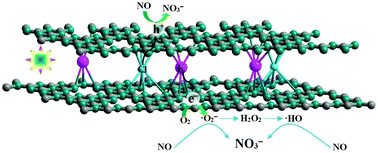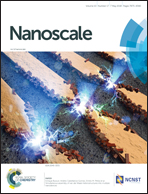KCl-mediated dual electronic channels in layered g-C3N4 for enhanced visible light photocatalytic NO removal†
Abstract
Limited by relatively fast charge carrier recombination, the performance of g-C3N4 photocatalysts is still far below what is expected. Herein, we tackle this challenge by introducing K and Cl ions into the interlayer of graphitic carbon nitride (KCl-doped g-C3N4). It is found that K and Cl ions coexisting in g-C3N4 could function as a dual channel for electron and hole transfer, respectively. As-prepared KCl-doped g-C3N4 shows a narrow bandgap, positive-shifted valence band edge and lower barriers for charge transfer between layers. Under visible light irradiation, the electrons created in the g-C3N4 layer are transferred by K ions, while the holes are transferred via Cl ions to induce photocatalysis. As expected, the enhanced visible light absorption, strong oxidization ability of the valence band holes and the prolonged lifetime of the charge carriers benefiting from the dual electronic channel endow KCl-doped g-C3N4 with a superior photocatalytic performance for NOx removal, exceeding the performances of both bare g-C3N4 and K doped g-C3N4. An in situ DRIFTS investigation reveals the reaction mechanism of the photocatalytic NO oxidation. The perspective of the dual channel for charge transfer could present a new design concept to effectively steer the efficiency of photocatalysts.



 Please wait while we load your content...
Please wait while we load your content...